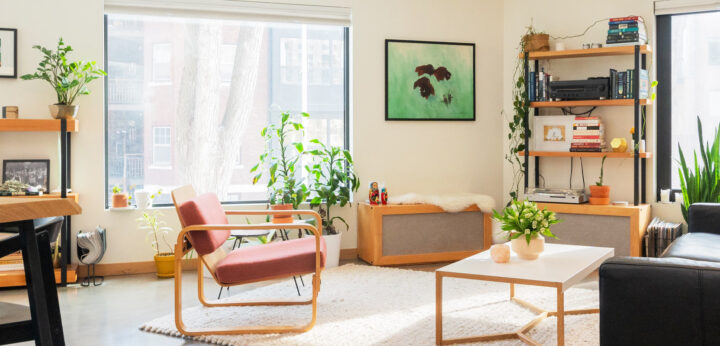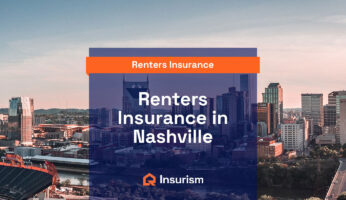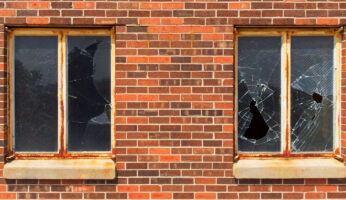HO4 Home Insurance Policies Explained
HO4 home insurance is just another name for renters insurance. You’ll also sometimes see it referred to as:
- HO-4 insurance (with a hyphen)
- Tenant insurance
- Contents insurance
If you know what renters insurance is, you already understand HO4 insurance. Basically, renters pay a monthly fee for their HO4 policy, and if an accident happens in their rented dwelling (like a water leak or kitchen fire), their insurance provider will help pay for any associated expenses.
Why are renters insurance policies called HO4 policies?
There are eight types of home insurance policy, numbered 1 through 8. Renters insurance is the fourth type of policy, which is why it’s called HO4.
Examples of other home insurance policies include:
- HO3 insurance: HO3 insurance is another name for standard homeowners insurance. HO3 policies are similar to HO4 policies, but are meant for people who own their homes (instead of renting them).
- HO6 insurance: HO6 policies provide condo insurance. They’re similar to HO3 policies, but they apply specifically to condominiums (privately owned units in a larger, mutually owned building).
Notice that each type of home insurance policy starts with “HO,” which stands for homeowners. Although HO4 policies follow this naming scheme, the term is a bit misleading because HO4 insurance is only for renters, not homeowners.
What do HO4 policies cover?
HO4 policies cover damage to your personal property. They also cover your liability (your legal fees) if you break someone else’s property or accidentally injure them.
Unlike other forms of home insurance, HO4 insurance doesn’t cover damage to your home itself — meaning the actual building. Insuring and protecting your building is your landlord’s responsibility.
Types of coverage
HO4 insurance policies provide the four basic types of renters insurance coverage:
1. Personal property coverage
HO4 policies will cover the costs if your property is damaged or lost due to a covered peril (an accident or disaster that’s listed in your policy). For example, your HO4 insurance will cover your $2,000 TV if your AC unit leaks water all over it, sending you a check for a replacement.
The amount they send you won’t quite come up to $2,000, because any time you file a personal property coverage claim, you have to pay a fixed amount out of pocket before your provider will reimburse you. This is called your renters insurance deductible, and is commonly set at $500. If your deductible is $500 and you file a property claim for your $2,000 TV, your provider will pay out $1,500 and you’ll pay the rest.
Standard policies offer between $15,000 and $30,000 in personal property coverage (which means they won’t pay anything over that limit, even if your claim exceeds that amount).
2. Personal liability coverage
HO4 insurance will also cover your legal fees if you’re held liable for damaging somebody else’s property or injuring them. For example, if your child throws a baseball through your neighbor’s window or your dinner guest slips and breaks their leg, HO4 insurance will help cover your expenses if they take you to court.
Standard policies offer around $100,000 in personal liability coverage.
3. Guest medical coverage
HO4 insurance covers minor medical bills for accidents that happen in your rental, even if you weren’t held liable for them.
For example, let’s say that a dinner guest who broke their leg decides not to take you to court after all. As long as their medical expenses are relatively low (no more than a few thousand dollars), your insurance will cover them anyway.
Standard policies offer around $1,000 to $3,000 in guest medical coverage.
4. Loss-of-use coverage
If an accident in your rental forces you out of your home, HO4 insurance will help cover your temporary living costs. For example, if a pipe bursts in your unit, HO4 insurance will pay for you to stay in an Airbnb while they’re being replaced.
Loss-of-use coverage is usually capped at about 25% to 30% of your personal property coverage. If your property is insured up to $30,000, your insurer will provide around $8000 to $9000 in loss-of-use coverage.
What are perils in HO4 insurance?
An insurance peril is an event that causes damage to your personal property or home. Perils can be either covered (which means your insurer will pay for them) or excluded (which means they won’t). The way covered perils are listed in your policy depends on whether you have a named perils or all-risk policy.
What perils are covered by HO4 policies?
HO4 policies cover essentially the same perils as HO3 policies. Specifically, HO4 insurance covers:
- Fire
- Smoke
- Explosions
- Damage from vehicles or aircraft
- Electrical malfunctions
- Theft
- Vandalism
- Wind (including hurricanes and tornadoes)
- Volcanic eruptions
- Certain kinds of water damage (like bathtub overflow)
- Hail
- Damage from snow or ice
- Burst pipes
- Frozen pipes
- Falling objects
- Mold caused by another peril
What don’t HO4 policies cover?
Although HO4 insurance is very comprehensive, it does exclude certain items and perils. HO4 policies don’t cover:
- Your car: Although most of your personal property is covered by HO4 insurance, your car is excluded from that protection because it’s meant to be covered by a different type of insurance (auto insurance). However, if something inside your car is stolen or damaged, your HO4 policy will cover that.
- The building you live in: The building you live in belongs to your landlord. It’s their responsibility to protect it with their own insurance, so your HO4 policy won’t cover it (and you don’t need it to).
- Damage from floods: Floods aren’t covered by HO4 insurance. To get coverage, you need to buy a separate flood insurance
- Damage from earthquakes: Earthquakes also aren’t covered by HO4 insurance. As with floods, you need to buy a separate earthquake insurance policy or an earthquake insurance rider (an add-on to your HO4 policy).
- Bed bugs and other pests: Most HO4 insurers don’t cover bed bugs. A few smaller insurers like Jetty offer bed bug riders, but this is rare.
- Appliance wear-and-tear: Your appliances are covered if they’re damaged, stolen, or destroyed by a covered peril. But if they break due to everyday wear and tear, HO4 insurance won’t cover it.
- Sewage backups and failures: Sewage backups and sump-pump failures aren’t covered by basic HO4 policies, although many insurers offer water backup riders that cover them.
Types of HO4 policies: replacement cost and actual cash value
There are two types of HO4 insurance policies: replacement cost policies and actual cash value policies.
Replacement cost policies: If you have this type of policy, your insurer will pay out the cost of replacing lost items with brand-new equivalents. For example, if someone steals your three-year-old iPhone 10, they’ll pay out the cost of a new and unused iPhone 10.
Actual cost policies: These pay out however much your item was worth when you lost it. With this type of policy, if someone steals your three-year-old iPhone 10, your provider will pay out the cost of a three-year-old iPhone 10 (i.e., what you’d pay if you bought one on eBay).
Replacement cost policies offer better coverage, but they’re also more expensive — about 10% more expensive than actual cash value policies, on average.
How much do HO4 policies cost?
Most HO4 policies are between $10–$30 per month, with the average being about $15.
The factors that affect the price of HO4 renters insurance include:
- Where you live
- What condition your house is in
- What deductible you choose
- How much personal property coverage you buy
- How much liability coverage you buy
- How much medical coverage you buy
- Whether you get a replacement cost or actual cost policy
In general, the more you pay for your policy, the more situations your insurer will cover and the more they’ll pay out if you have to file a claim.
How much HO4 coverage do I need?
Consider the following factors when you decide the amount of coverage you need:
- Natural disaster risk: If you live near a volcano or in a state that’s prone to hurricanes or other natural disasters, you may need more renters insurance coverage. (If your provider offers them, you should also consider buying supplemental riders to get flood or earthquake coverage.)
- Weather: Consider opting for more coverage if you live somewhere that’s prone to extreme weather, particularly high winds or snow or ice storms.
- Your building: The building you rent is your landlord’s responsibility, but you should still consider its age and how well-maintained it is (or isn’t) when you buy insurance. If you live in an older building, it might be more prone to disasters like fires or leaky pipes.
- Crime: If you live in a high-crime area, think about whether you own any expensive things (like jewelry or electronics) that present a serious theft risk. If you do, consider buying more insurance.
- Pets: If you own pets that might bite people, you might want to opt for more liability coverage. HO4 renters insurance covers dog bites, but serious bites can be so expensive that they exceed the $100,000 in liability coverage offered by standard policies. If you have a pit bull or another dog that’s perceived as dangerous, you might have to shop around for renters insurance that covers pit bulls — not all insurers do.
What is an HO4 policy form?
HO4 policy form is yet another term for a renters insurance policy. The “form” is the actual document that spells out your policy’s terms — in other words, exactly what kind of coverage you have, the circumstances under which your insurer can cancel your policy, and so on.
Renters insurance policy documents are also sometimes referred to as:
- Homeowners 4
- Form No. 4
- Homeowners Policy Contents Broad Form 4
Basically, what we usually refer to as renters insurance is also known by a lot of other names. Most of these are pieces of industry jargon that you’ll never encounter and don’t need to memorize.
Other types of home insurance
Remember that the HO in HO4 stands for “homeowners.” There are seven other types of home insurance policies that follow this naming scheme:
- HO1: This is basic homeowner’s insurance. These policies offer very limited coverage — they’re actual cash value policies, and only cover a few perils.
- HO2: HO2 insurance offers more coverage than HO1 insurance. These policies cover a wider range of perils, and pay out the replacement cost for damages done to the actual dwelling.
- HO3: HO3 insurance is the most common type of homeowners insurance for single-family homes. HO3 policies are open perils, meaning they cover all perils except those listed as exclusions in the policy. (Less comprehensive insurance is called named perils insurance, meaning it only covers perils that the policy specifically includes.)
- HO4: As we’ve said, HO4 insurance is another name for renters insurance. If you’re a tenant (i.e. you don’t own the home you live in), this is the kind of insurance you need.
- HO5: This is the most comprehensive type of single-family home insurance. HO5 policies are open-peril and replacement cost. HO5 policies have higher premiums, but offer more coverage, making them a popular choice for high-value homes.
- HO6: HO6 insurance is condo insurance. It’s similar to HO4 insurance, but also covers the structure of the unit (floors, walls, ceilings, etc).
- HO7: This is a standard homeowners insurance policy that applies to trailers, mobile homes, and RVs. HO7 policies operate more or less the same as HO3 policies.
- HO8: This is a special type of policy that offers limited coverage to homes that have been deemed too “high risk” to qualify for other policies.
Related Questions
- What is guest medical coverage in renters insurance?
- What is a sub-limit in renters insurance?
- Does renters insurance cover home-based businesses?
- Does renters insurance cover gold or silver bullion?
- What does "dependent in the care of" mean in renters insurance?
- Does State Farm renters insurance cover hotel stays?






